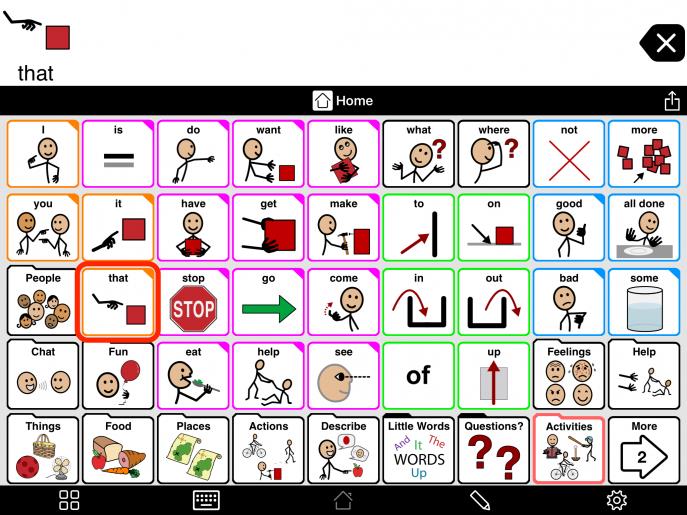Let’s Talk…AAC and more: Part Two
This is part two of our series “Let’s Talk…AAC and more”
Effective Strategies for Using Augmentative and Alternative Communication
by Jessica Gasalberti, MS., CCC-SLP
In our last post in the series, “Let’s Talk…AAC and more,” speech language pathologist Jen Jacobs talked about what AAC is and the various types. To recap, AAC stands for Augmentative and Alternative Communication. It is a support or alternative means to verbal communication that can help people communicate and express themselves. AAC can be aided supports, such as picture symbols, photographs, or static or dynamic voice output devices, as well as unaided supports, such as gestures, facial expressions, vocalizations, or sign language.
Let’s explore some evidence-based, proven strategies for teaching and using AAC. The acronym SMoRRES is helpful in remembering the main strategy to teach the use of AAC, aided language stimulation.
S: Slow speech rate. Present information slowly and clearly to aid understanding.
Mo: Model. The number one strategy to effective communication using AAC is through modeling or the use of aided language stimulation. This is when the communication partner conveys a message to the AAC user using a form of augmentative or alternative communication, rather than spoken words alone. This can be done by pointing to symbols on a static communication board or speech generating device, while verbally saying the message as well. Suggested topics to talk about are parallel talk (talking about what the student is doing) and self-talk (talking about what you are doing).

(Example of a static communication board)

By modeling the same “language” as the AAC user, the communication partner is building the child’s understanding of the communication supports provided to them. Remember: typically developing children are spoken to for an entire year before they are expected to say anything back, therefore, it is important to keep in mind that we should not expect an AAC user to be proficient in using their AAC supports right away!



R: Respect and Reflect. If the child points to something, reiterate their message by modeling a symbol on their device. Do not make the child repeat their message on their device.
R: Repeat the child’s message and frequently used words or phrases. Repetition facilitates learning.
E: Expand on what the child says. Model 1-2 additional words more than their current utterance length. If the child says 1 word utterances, build on their message by creating 2-3 word utterances.
S: Stop and provide the child with opportunities to respond. After modeling, pause for 10-20 seconds to let the child process the information and have a chance to say something. Presume competence by accepting all communication attempts.

Other things to keep in mind when using AAC:
-Create motivating opportunities; if the child is not engaged or interested in an activity, they will not be motivated to communicate. Make communication fun and give them something to talk about!
-Your messages do not have to be grammatically correct when modeling, however when verbally saying the message, use correct grammar. Model on device: He go à Say: “He went” or “He is going.”
-When modeling, just choose a few words to start; find them on the device and know where they are! Using core words (words that can be used for a variety of functions across a wide range of settings) is a good place to start. Core words, such as go, stop, like, different, and more can be used anytime, anywhere!
Refer to the chart below for other helpful AAC tips called The Do’s and Don’ts to AAC!

And, when all else fails….

Be on the lookout for future posts about how to implement these strategies at home as well as a story about one of P.G. Chambers School’s students who uses AAC!
References:
Kate Ahern: http://teachinglearnerswithmultipleneeds.blogspot.com/
Gayle Porter (2007, updated 2012): Pragmatic Organization Dynamic Display (PODD) communication books: Direct access templates. Cerebral Palsy Education Centre.
Jill Senner, PhD.,CCC-SLP & Matthew Baud, MA, CCC-SLP (2013):
Lauren Enders, Pat Mervine, Melissa Skocypec, Cathie VanAlstine (2013):